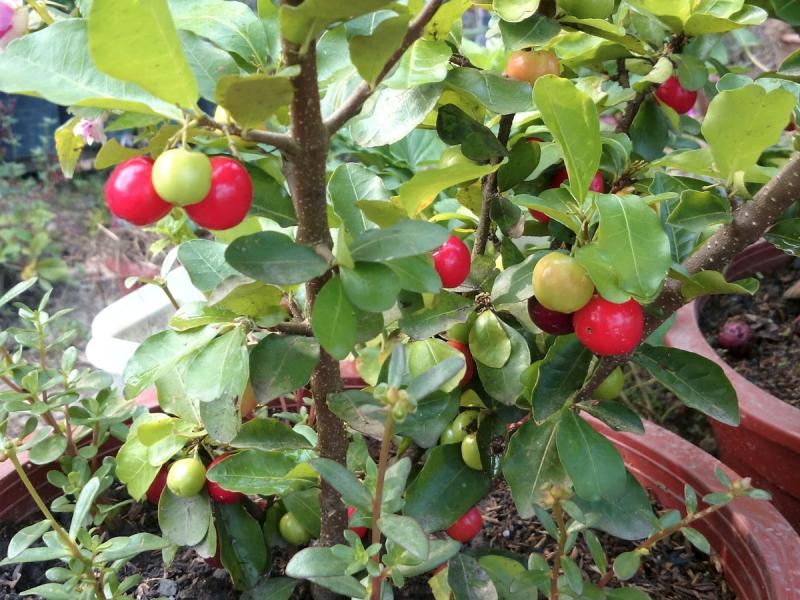Barbados is a land of surprises. Even though the island of Barbados is 3,000 miles west of Africa, mineral dust from the Sahara Desert blows onto the island. And along with the wind come fish, flying fish, to be exact.
The flying fish glide up to 160 feet across the surface of the Atlantic and with a good updraft can fly up to 1,300 feet. Besides flying fish, you will find the island host to mongoose imported from India to control rats in the sugar cane fields. Except the mongoose ate the native snakes which were the rats' main predators, so importing mongoose led to a population explosion of rats.
In a land of flying fish and Indian mongoose there is a remarkable tree, the Barbados Cherry (Malpighia glabra), also known as Acerola, whose sweet fruit is filled with an extremely high concentration of vitamin C.
Spotting a mongoose is considered good luck in Barbados, and luckily, when Barbados Cherry is grown in pots, it grows remarkably fast and will start to flower and bear fruit when just three to four feet tall.
This is a fast-growing, low-maintenance potted plant.
Kids like to eat the cherries right off the tree, but you can also cook them into pies and cobblers or squeeze them for juice.
Because Barbados Cherry trees are self-fertile, you will get fruit with just one plant. It is quite hardy for a tropical tree and can tolerate temperatures down to 25 F. You can set the potted tree outdoors during summer; just be sure to bring it back inside before frost.
Barbados Cherry trees grow very well in containers as long as you give them a large enough pot for good root development. Use a good organic potting mix and choose a pot with enough drain holes. Glazed pots retain moisture and need much less watering than unglazed terracotta pots.
Place your Barbados Cherry in a bright, sunny window. A window that faces south is ideal to encourage the most fruit production.
When watering your tree, be sure to just lightly soak the soil. Let the top two inches of soil dry out before watering again. Just be careful not to water too much or you can rot the roots and kill the tree.
Fertilize with a good organic fertilizer 8-3-9 applied from spring until fall when your tree is actively growing.
Barbados Cherry makes a good subject for bonsai because it is naturally small.
Barbados has one of the highest number of people per capita over 100 years old. Maybe it's from eating the flying fish? Maybe it is from seeing the lucky mongoose? Or maybe it's the sweet, vitamin-rich fruit of your own Barbados Cherry tree.





















































